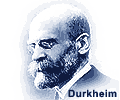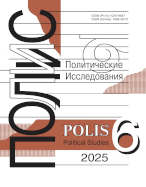Perestroika – Glance from the 30-Year Distance
Galkin A.A.,
Dr. Sci. (Hist.), Professor, honorary Dr. of Institute of Sociology, RAS, galkin_a.a@mail.ru
Krasin Yu.A.,
Dr. Sci. (Philos.), Professor, honorary Dr. of Institute of Sociology of the Russian Academy of Sciences, krasinyua@yandex.ru
elibrary_id: 250827 |
DOI: 10.17976/jpps/2015.05.13
Galkin A.A., Krasin Yu.A. Perestroika – Glance from the 30-Year Distance. – Polis. Political Studies. 2015. No. 5. https://doi.org/10.17976/jpps/2015.05.13
A “round table” devoted to the 30th anniversary of perestroika (1985‑1991) was held in the Department of analysis of socio-political processes of the Institute of Sociology, RAS in May 2015. The researchers of the Department (Yu. Krasin, A. Galkin, A. Veber, F. Kuriukin, L. Nikovskaya, V. Pantin, I. Yazhborovskaya and others) took part in the discussion. This article tries to comprehend the approaches revealed by the exchange of opinions. Glance at the perestroika from the present convinces that despite sharp criticism, it stays in the memory of millions as one of the few landmarks considered to be “a moment of truth” in Russian history. A remote time distance gives us possibility to perceive the meaning of perestroika more clearly, to identify its place in the chain of historical events of our epoch. Perestroika was a purposeful movement; its goals were humanistic and were met by means of their achievement. The logistic conception worked out on this basis, in spite of its problems and omissions, outlined the contours of transition to a contemporary democratic society. This feature positively distinguishes perestroika from the next stages of the Russian reformation. When enumerating holes and mistakes of perestroika, one should remember that it was interrupted on its liftoff; its purpose was never fully achieved. The future destiny of the Russian reformation depends on whether this process would be directed in the channel of evolutionary democratization of state and society. The main nexuses and factors of the democratization, as one can see them today, are: breakthrough to the innovative type of development, demanding the rise of role and prestige of science; “cultivation” and professionalization of the state; broadening of functions of the civil society, involving it into the space of power relations. Hope and chance for successful completion of the democratic reformation of society, which was initiated 30 years ago by the perestroika, are closely connected with uncoupling of these nexuses.
See also:
Moiseyev N.N., Levikov A.A., Pavlovsky Yu.N., Cherevkov K.V.,
A New Volute of the Armaments Race Spiral or New Mentality. – Polis. Political Studies. 1991. No5
Oganisyan Yu.S.,
Socialism as the first stage of capitalism. Post-soviet Russia’s experience. – Polis. Political Studies. 2013. No3
Krasin Yu.A.,
Russia's Political Self-Determination: Problems of Option. – Polis. Political Studies. 2003. No1
Pastukhov V.B.,
«Perestroika» – second round. – Polis. Political Studies. 2011. No1
Mirsky G.I.,
Authoritarianism and Democracy: Two Models?. – Polis. Political Studies. 1996. No6




.jpg)






 print
print
.jpg)
.jpg)